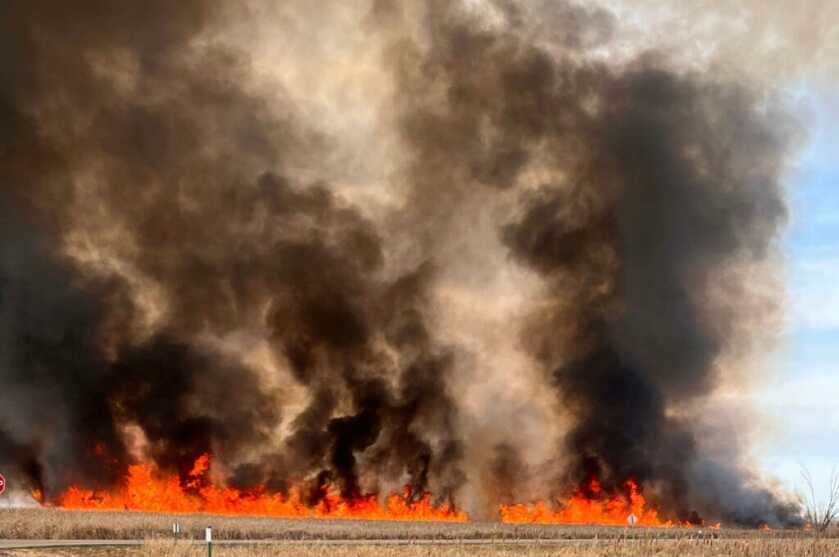
I once burned down a substantial fraction of Fort Sill, Oklahoma, while running an aerial gunnery range. It turns out that 7.62x51mm tracer rounds and dry grass make for a fulminant combination. The zillion or so acres I incinerated were, miraculously, all constrained to the firing ranges. Aside from some seriously pissed off rodents, there seemed to be little lasting harm done.
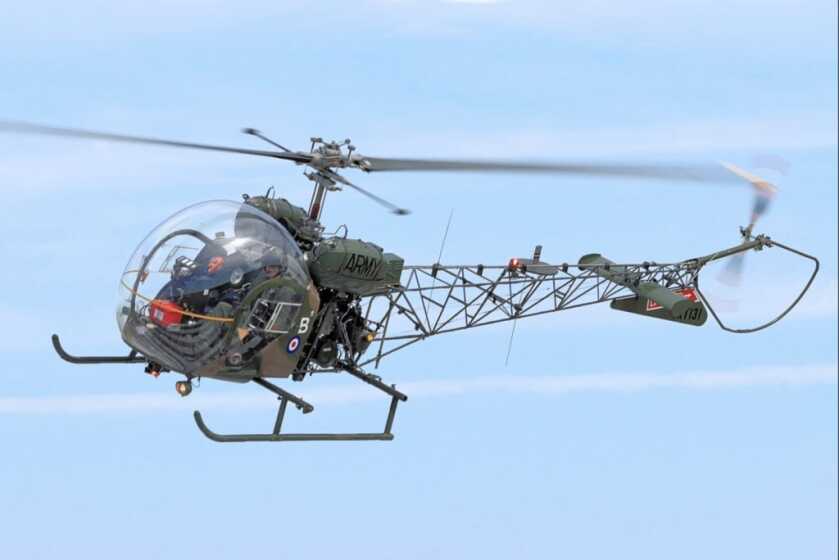
Providing effective defensive ordnance for the Army’s rotary-wing aircraft is a quandary as old as helicopters. The first dedicated helicopter gunships were actually adapted from OH-13s. The OH-13 is the bubble-canopied helicopter used in the TV series MASH. Slow, rickety, and fragile, the OH-13 nonetheless served as a starting point.
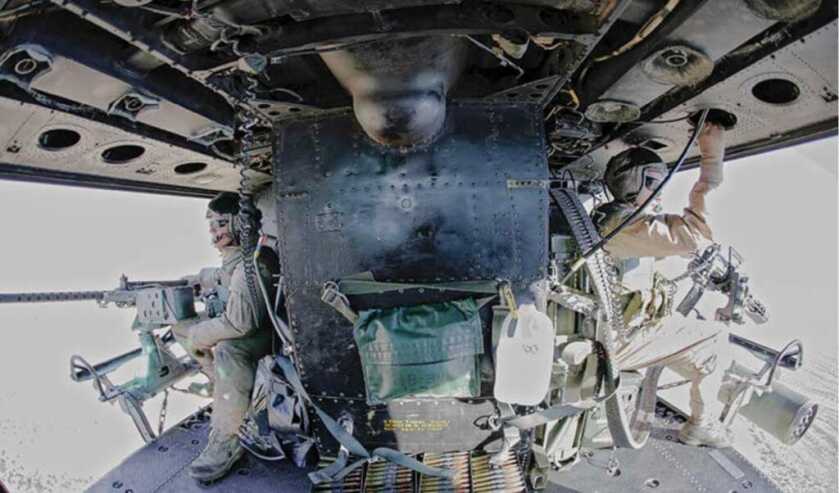
From our perspective this deep into the Information Age, it can be tough to visualize what it must have been like back in the early 1960s when the US Army was first figuring this stuff out. Nowadays helicopter gunships, assault aircraft, and heavy-lift platforms all working in synchronized harmony to accomplish complex missions day or night are simply background clutter. However, it was a rough road getting here.
See Also:
The Howze Board
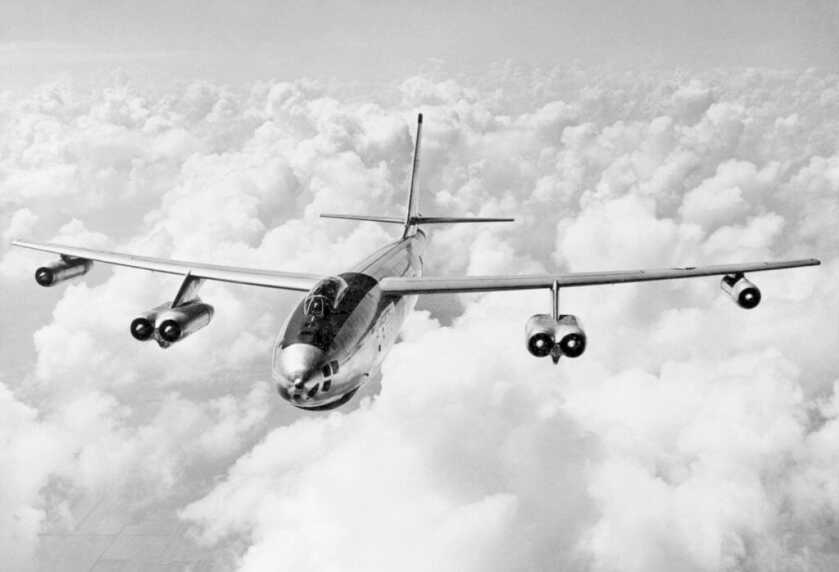
Human beings are tribal. In few places is this more obvious than in the military. In the early 1960’s the US Army was still a bit butt-hurt over the way the Army Air Corps had morphed into the Air Force, itself obviously its own free-standing military service. Warplanes are expensive, and a mere thirteen years earlier the National Security Act of 1947 had taken all that cash away from Army Generals and given it to the newly-minted Wing Nuts. Recent technological advancements in the world of combat helicopters demanded a significant rethink of the way Uncle Sam’s professional killers did business. Somebody needed to adjudicate who was going to own these sparkly new machines.

Helicopters had just found their legs during the war in Korea. For expeditious resupply and Casevac (casualty evacuation) purposes, nothing beat the helicopter. Despite their relative crudity, these machines could get into some of the most inhospitable places to drop bullets off and pick the wounded up. Once somebody thought to strap a machine gun to these aircraft the Air Force started to get nervous. Air Force Generals were not interested in giving up their hard-won little fiefdoms. Somebody needed to figure all this out. That somebody was LTG Hamilton Howze.
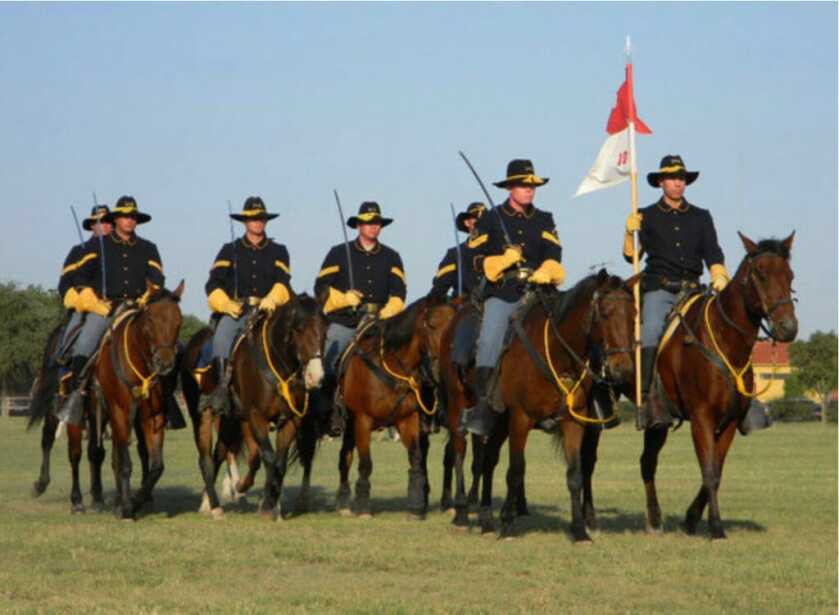
In 1962 LTG Howze was given the mandate by Secretary of Defense Robert McNamara to conduct a comprehensive review of helicopter combat applications “in an atmosphere divorced from traditional viewpoints and past policies.” It is rare that a General Officer is given the mandate to really think outside the box. LTG Howze ran with it.
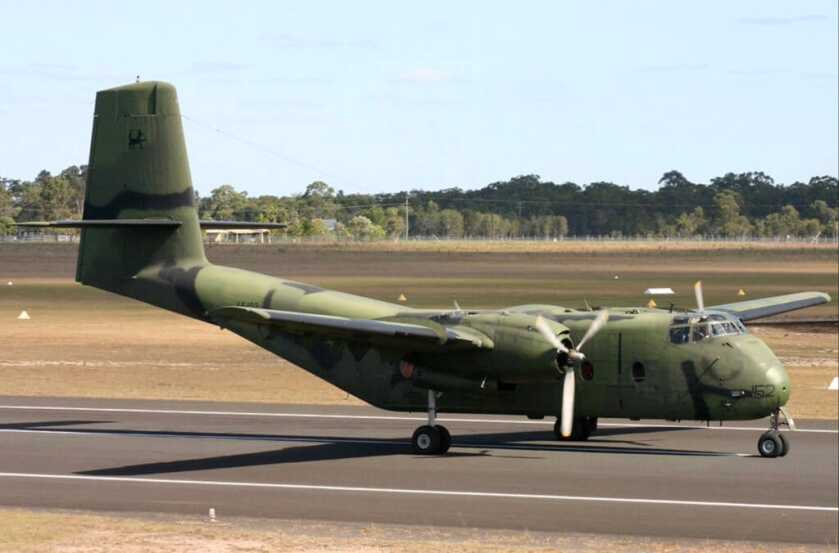
With the war in Vietnam looming on the horizon, the Air Force tried to impose weight and armament restrictions on the sorts of fixed-wing assets the Army might employ. All involved eventually realized this was stupid. Cargo aircraft like the CV-2 Caribou ultimately went to the Air Force, while the OV-1 Mohawk reconnaissance plane stayed with the Army. Participants later stated, “The Caribou and the Mohawk were the two major symbols of Army-Air Force disagreement and more time was devoted to these systems than to the entire mobility concept itself.”
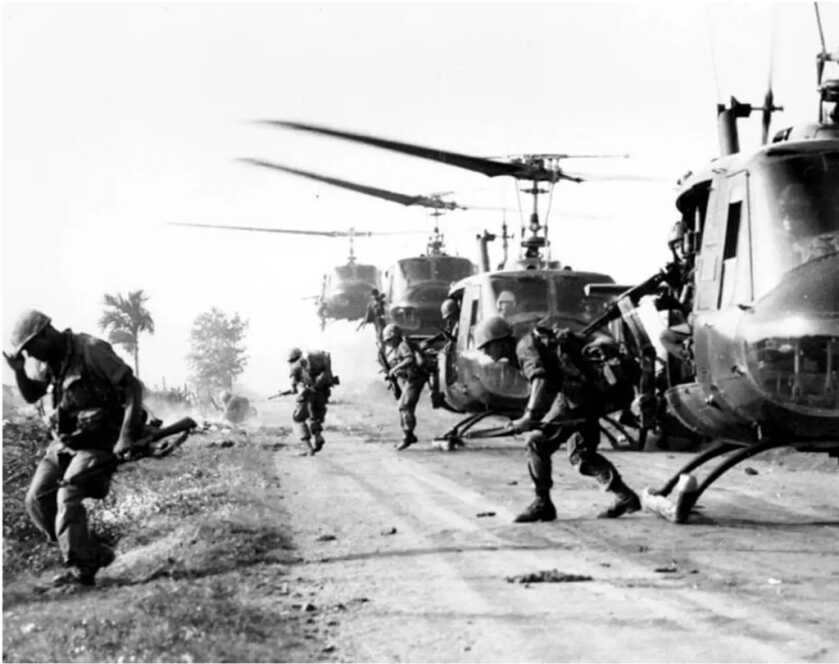
After a great deal of thought the final version made it back to McNamara. Rumor has it the finished document was some two inches thick. The concluding statement read, “Adoption of the Army of the airmobile concept-however imperfectly it may be described and justified in this report-is necessary and desirable. In some respects, the transition is inevitable, just as was that from animal mobility to motor.”

Film Appearances
The end result yielded, among a great many other things, the concept of the Air Cavalry Combat Brigade. If you don’t know what that is then kick back in front of the movie Apocalypse Now with special attention to the sequence where LTC Kilgore seizes the beach so he and Lance can surf. On second thought, if you spend time at GunsAmerica.com and haven’t seen Apocalypse Now at least three times I sure wouldn’t admit that to anybody. Most of us can quote the whole thing.

As an aside, Robert Duvall’s LTC Kilgore (“I love the smell of napalm in the morning…”) was originally supposed to be Gene Hackman. Sam Bottoms, who played the surfer Lance, developed a hookworm infection while filming in the Philippines that severely damaged his liver. Martin Sheen, who played CPT Willard, suffered a heart attack during filming that almost killed him. Steve McQueen was originally supposed to play CPT Willard, but the King of Cool didn’t feel like leaving the country at the time. It must be nice to be King…
Tactical Details
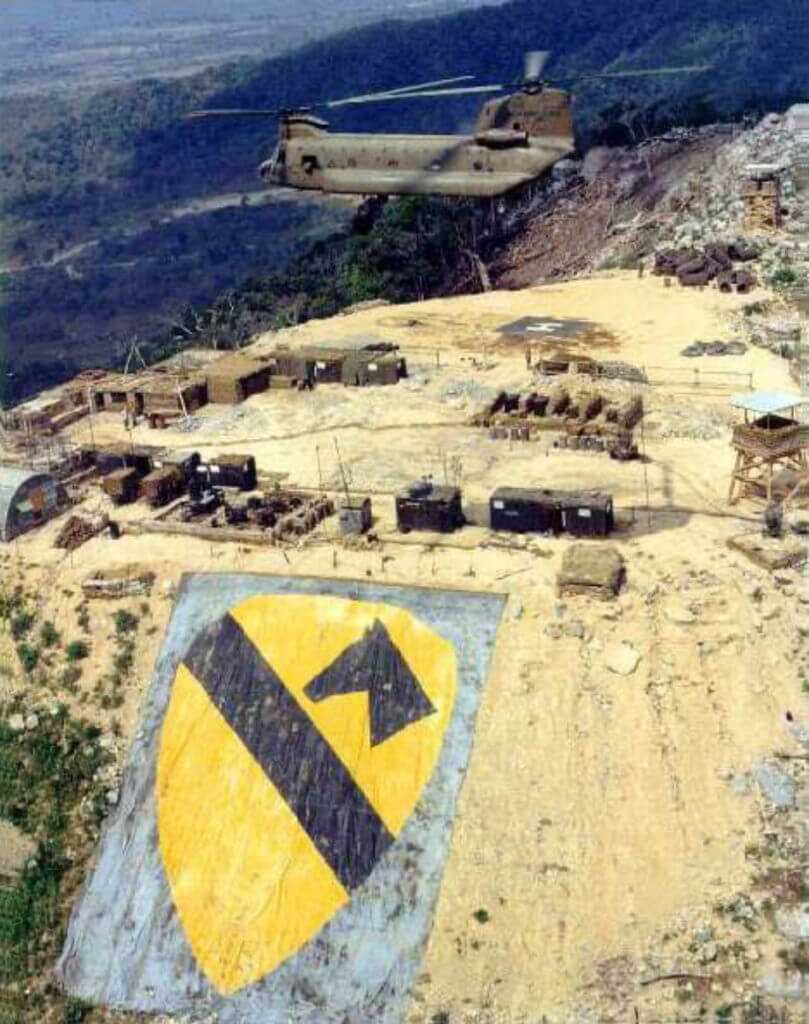
In short order, the 1st Cavalry Division was romping and stomping all over Vietnam sowing chaos. Over time the basic concepts of slicks (UH-1 transport helicopters carrying Infantry troops) escorted by dedicated helicopter gunships (most typically Cobras or Mike-model armed Hueys) evolved into the doctrine of vertical envelopment that inspired the modern airmobile tactics of today. Protecting those transport aircraft fat with troops while they tore about flying nap of the earth became the highest priority.
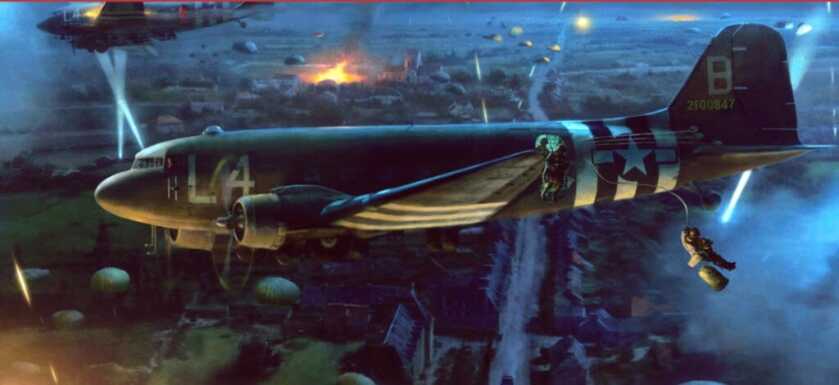
This wasn’t much like the Air Transport Command C-47s that flew during World War 2. Haters at the time claimed that ATC stood for “Allergic to Combat.” Hardly. Those guys flew big, fat cargo planes that dropped paratroopers over hostile terrain in the dead of night amidst deadly flak and enemy fighters. By contrast, however, assault helicopters consistently flew down in the trees where the Wild Things Roamed. Their primary concern was Bad Guys with rifles. Several things were attempted to mitigate that threat.

The most obvious solution was simply door guns. This began as standard ground versions of the M-60 General Purpose belt-fed machinegun suspended in the side doors of UH-1 Huey helicopters with bungee cords. This worked OK, but accuracy suffered and it was shockingly easy to shoot up your own rotor system in the heat of battle. That evolved into the M-60D, a pintle-mounted version of the M-60 equipped with spade grips and a ring sight. These mounts had built-in stops to keep you from ventilating your own airplane. These were the guns I used to nearly burn Fort Sill to the ground. Take it from me, they really sucked.
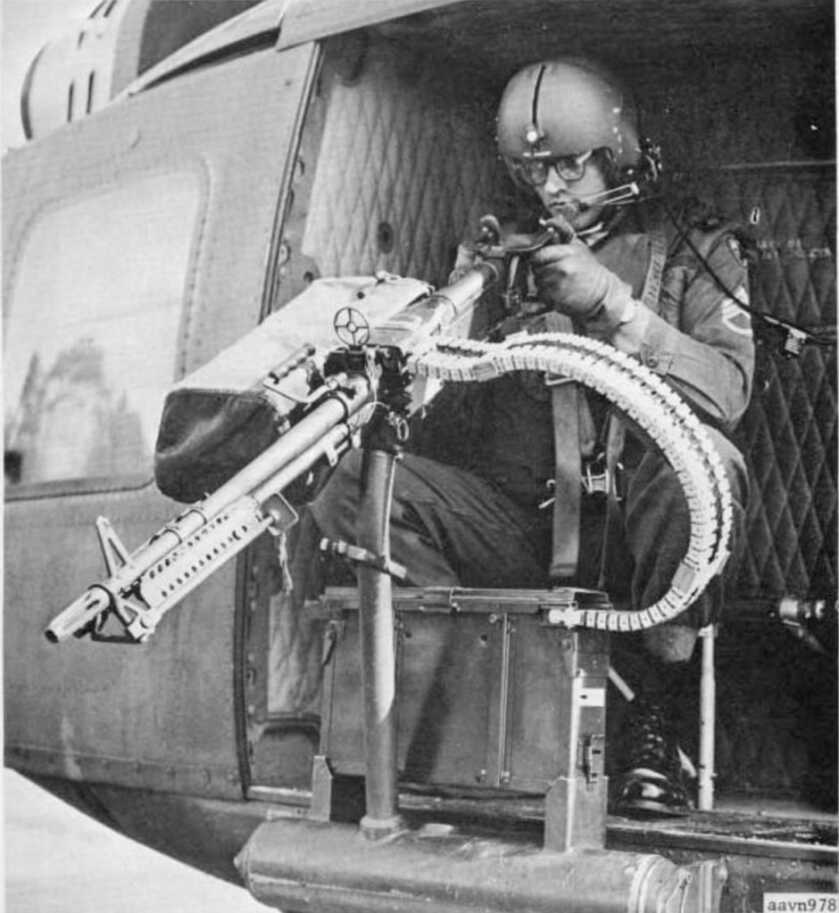
Our D-model M-60’s were meticulously maintained and greased to perfection. They were kept spotlessly clean and operated from the antiseptic world of helicopters in flight, yet they still choked all the freaking time. If I recall correctly, I had twenty-four of these guns and maybe five of them actually ran reliably. They did not inspire confidence.

The Task Force 160 used M-134 miniguns at the time, and there’s no denying the cool factor there. These electrically-powered six-barreled Gatling guns ran through ammo like Congress burns money and were quite reliable. However, when the aircraft’s power went down the guns did, too. This became an issue during the Battle of Takur Gar in 2002 as part of Operation Anaconda. A Task Force MH-47G Chinook was shot down near the Shahi Kot Valley in Paktia Province, Afghanistan. US Navy SEALs, Army Rangers, and sundry other high-speed special ops guys fought a vicious battle around the downed aircraft. USAF Combat Controller John Chapman earned a posthumous Medal of Honor for his actions on that forlorn mountaintop. Amidst it all, however, the Chinook’s miniguns were unusable once aircraft power was lost.
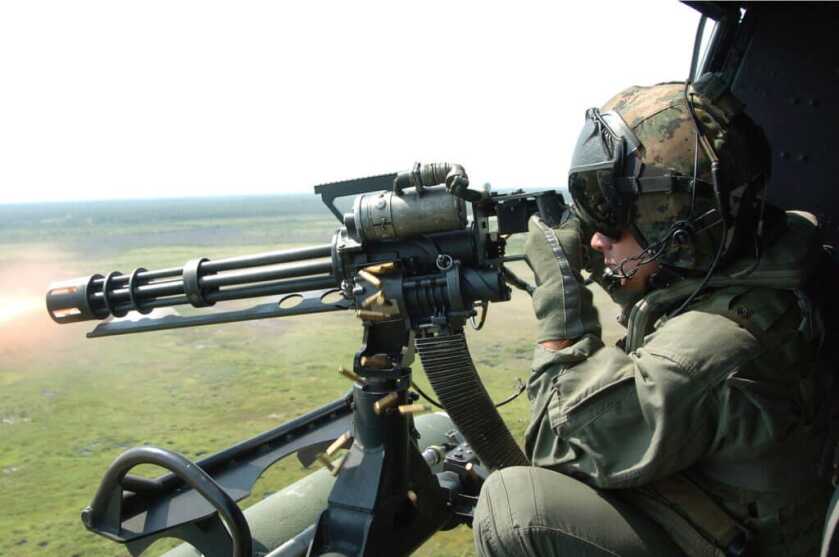
Helicopter door guns are, by their nature, area weapons systems. Bullets behave differently depending upon which side of the aircraft they are fired from while in forward flight. The airflow over each spinning round transforms each individual projectile into its own little flying machine. Rounds fired on the right tend to fly upward such that the gunner must aim underneath a target to connect. Rounds fired on the left tend to plunge unduly such that extra elevation is required. This is due to a remarkable spot of Physics called the Magnus Effect. Regardless, it is really tough to be precise when firing belt-fed machine guns out of a moving helicopter.
The XM-215
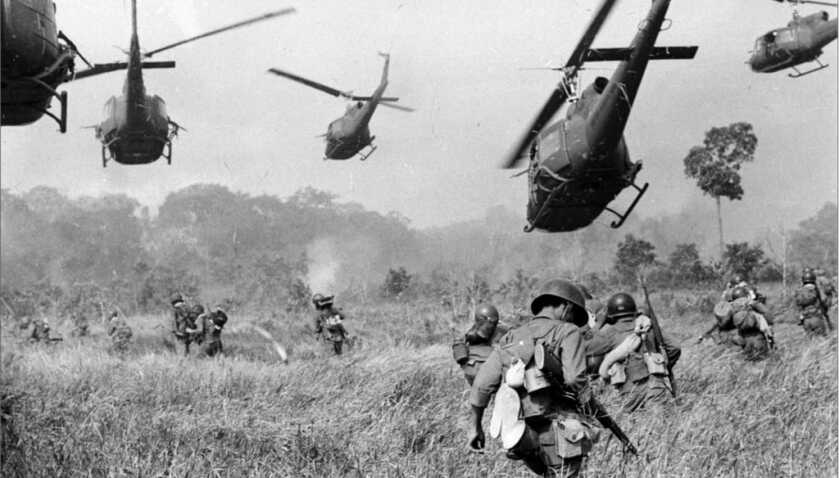
As the Army was learning how to fight helicopters in Vietnam it became obvious that assault aircraft were most vulnerable as they were coming in to land or leaving a hot LZ. Under those circumstances, VC and NVA forces would engage these aircraft at close range with small arms, exacting a shocking toll. Door guns helped to a degree, but the nose of the aircraft was consistently vulnerable. Some crazy people back in November of 1968 dreamt up the XM-215 as a possible solution.
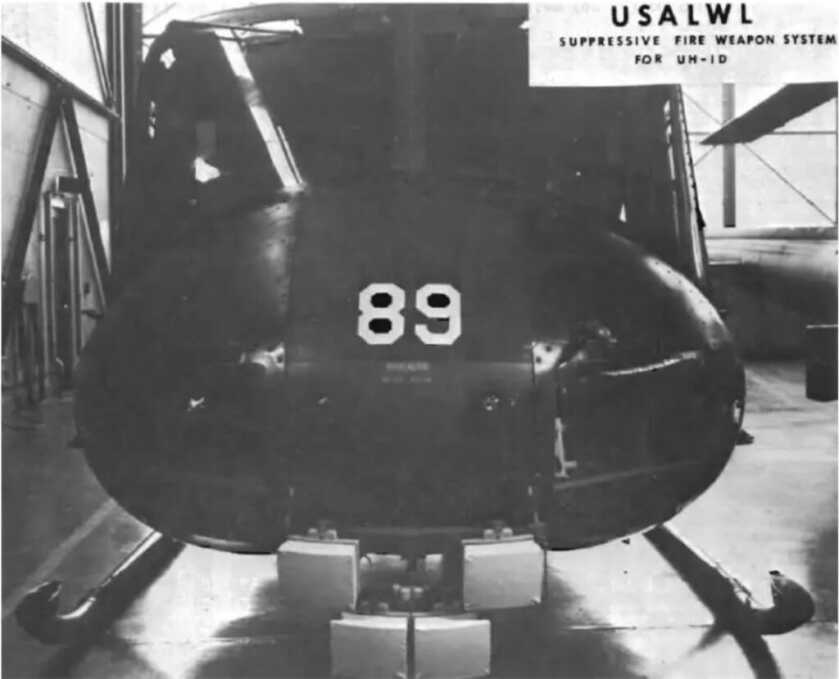
This thing was called the Multiple Barrel Gun or the Suppressive Fire Weapon System for Helicopters. In an acronym-obsessed organization that became either the MBG or the SFWSH. No matter what you call it, the XM-215 was pretty radical.
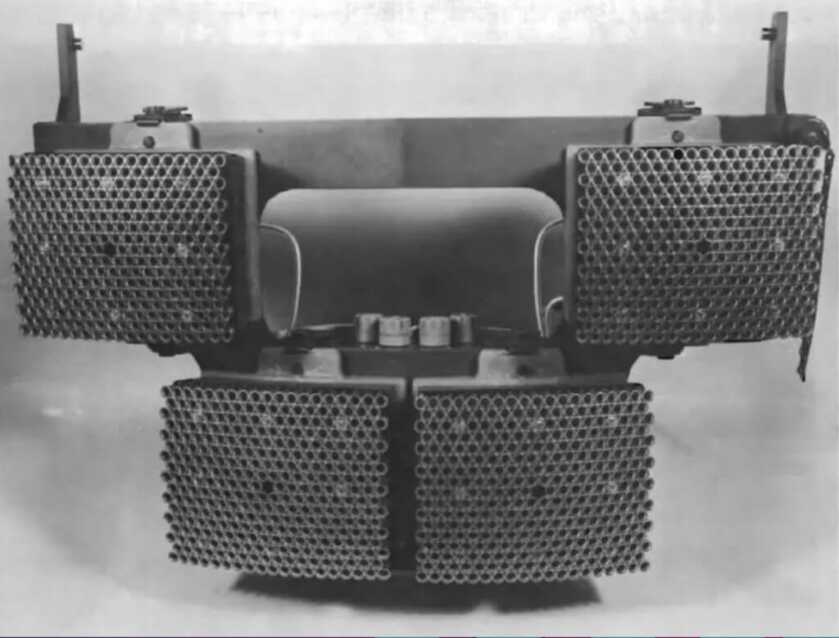
The XM-215 looked like a honeycomb mounted under the chin on a UH-1 helicopter facing forward. This honeycomb consisted of four modules containing 1,224 individual 2-inch .22LR barrels oriented in a fan shape. A control module in the cockpit allowed the crew to select a variety of firing states from ripple fire to one massive volley. At its maximum rate, the XM-215 could be emptied in ten seconds, theoretically sleeting the area in front of the aircraft with an impenetrable cloud of tiny little 40-grain bullets.

While that is an intriguing idea, it simply didn’t work. Barrel length was inadequate to produce much muzzle velocity, so the little bullets tended to be swept downward by rotor wash and rendered ineffective at all but the most intimate ranges. The system was also fairly cumbersome and had to be reloaded one barrel at a time. I can only imagine how tedious that might be.
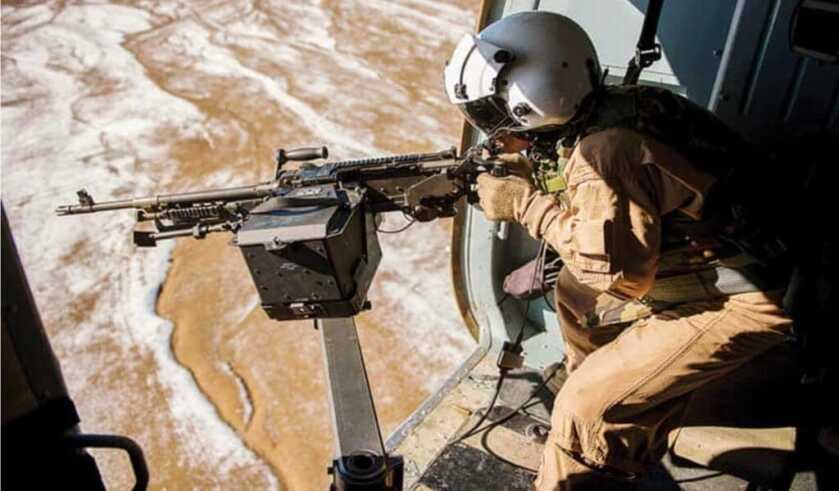
After a few prototypes and a boatload of .22 rimfire rounds expended the XM-215 went the way of the dodo. Nowadays superior battlefield intelligence, thermal and night vision systems, and helicopter gunship support combined with crews who can fly their machines at speed while down in the grass all tend to make air assault operations survivable, even in a contested environment. For a time back in the 1960’s, however, some really smart guys tried to figure out a way to improvise a Claymore mine of sorts on the nose of a Huey helicopter. The XM-215 that resulted qualifies as one of the weirdest weapons of the modern age.
*** Buy and Sell on GunsAmerica! ***


Always enjoy Dr. Dabbs’s articles. He is an excellent writer for a science guy, sort of a polymath.
Excellent article by Dr. Dabbs, as usual. The pic of the H-13 brought back too many memories. My battalion, US Navy Mobile Construction Battalion 3, began building Camp Eagle for the 101st and 1st Air Cav in the fall of 1967 at Phu Bai, RVN with 7 bulldozers working at one time on their site. At first, without sufficient perimeter wire up, their helicopters were inside our perimeter and their flight crews spread out in our hootches at Gia Le Combat base we shared with the two USMC Battalions 3rd MARDIV Engineers and 3rd Shore Party. I was a machinist and their counter-mortar radar was about 75 feet from my little machine shop trailer. I recall watching an H-13 flying at night just outside our perimeter with the inside lights on and an aviator looking a map! I stopped the first helicopter crewman I saw and asked “Are they crazy? Don’t you guys know what’s going on out there?” He told me, ah, there’s some things you don’t know. First, the H-13 is flying forward but cocked at an angle, which makes shooters (hopefully) miss. 2nd, way up high is a “slick ship” maybe with an M-60, but lots of flares. And 3rd, trailing the H-13 at a slightly higher elevation, was a gunship. So, the first time the H-13 drew fire, the slick ship started throwing flares, and the gunship moved on down and took care of the problem. Brave men in that day.
“This is a D-model M-60. Note the spade grips, ring sight, and lack of a forearm.”
That a doormount M-60 lacks a forearm is logical.
The tripod being retained, however, fulfills an eventuality I cannot comprehend.
Design, parts commonality, and Army inertia. One of the M-60’s numerous flaws was that the barrel, gas cylinder, and bipod were all hard mounted to each other. Most likely removing the bipod would’ve required at least a unit level armorer if not higher echelon to do it. Leaving it all together would ease logistics issues, e.g. the barrel assembly would work for either the base-model or the D. That probably gets to the Army inertia issue…there was no reason to take the bipod off as the D model was hard mounted so no weight constraints, and keeping the supply lines simple made sense.
Better question to ask is why was the M-60 designed with some a barrel assembly? To carry a spare barrel in combat you had to lug more weight than needed.
With the bipod in place you could theoretically still run the gun removed from the mount in a crisis. As an aside, Terminator: Salvation has a really cool scene where Christian Bale’s John Connor runs a D-model M-60 upside down in a crashed UH-1. Here’s a link–https://www.youtube.com/watch?v=v3aqGRzL0BY
This would be fun to pop off at my outdoor range…. which leads me to a wild idea.
The idea of a reusable Claymore for ground troops intrigues me. It’s puzzling to me, though, how they can cram a firing control mechanism into that small space behind the barrels. I would like to know how they did that. BTW my brother served at Ft. Sill in the ’60s. I still remember the view from beautiful Mt. Scott when we visited him. I didn’t notice any smoke or flames, though. Stay safe.
Im pretty sure I could have burned down my beloved Ft.Sill better than Dr. Dabbs if only someone would give me a helicopter. As a young E5 I route marched over to the troop clinic to take a flight physical as part of the application process.Alas my eyes were no good so back to the Field Artillery I went. Just as well I suppose- I would have burned not only the post but adjoining Lawton,OK.
I, too, have started range fires on Fort Sill. It is a right of passage if you ask me.
The XM-215 .22 Rimfire Helicopter Defense Weapon… ”
Obviously designed by someone who didn’t know what a helicopter was, how far a .22 in a 2 inch barrel shoots, the concept of FLARE in landing a helicopter in combat, and … the Pilot and his Co-pilot only have two hands and two feet … and all EIGHT of those are trying desperately not to CRASH the damned ship in the trees and piss off the CREW CHIEF ! After all … it IS his ship !!! He just lets you drive him around …
That’s not as weird as Mason Jars filled with JP-4, a hole punched in the lid, a grenade primer screwed in the hole, fly over an offending area, pull the PIN, toss the MASON COCKTAIL in the general offending area, and 5 seconds later the fireball causes the area to STOP OFFENDING !
Pacification …
NOOOO … we’d NEVER do THAT !!!